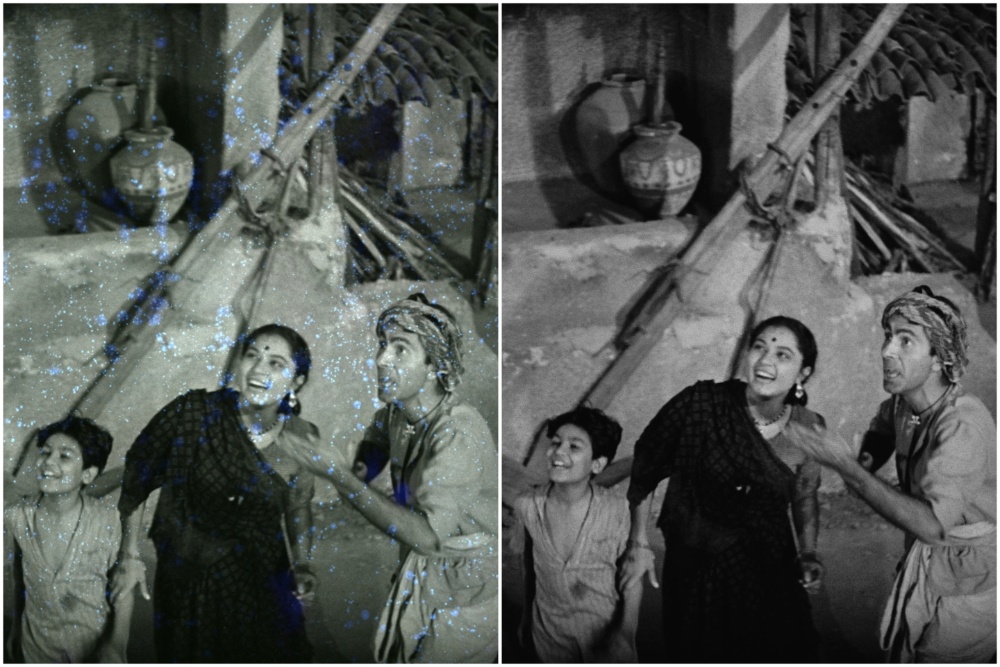The classic Indian film “Do Bigha Zamin” (Two Acres of Land), directed by renowned filmmaker Bimal Roy, is set to make its world premiere at the Venice Film Festival’s Classics section this year. This marks a significant milestone as the film undergoes a meticulous 4K restoration, led by Shivendra Singh Dungarpur, director of the Film Heritage Foundation.
Dungarpur reflects on the film’s enduring significance, stating, “Bimal Roy made ‘Do Bigha Zamin’ two years before Satyajit Ray’s ‘Pather Panchali.’” He emphasizes that Roy’s work introduced a realism that reshaped Indian cinema. The themes of humanism and compassion depicted in the film resonate strongly today, addressing issues like migrant labor and the urban-rural divide.
The restoration process, completed in collaboration with the Criterion Collection and Janus Films, faced considerable technical challenges over its three-year journey. Dungarpur explains that the original camera negative from the National Film Archive of India was incomplete and in poor condition. A comprehensive 35mm dupe negative from the British Film Institute, dating back to 1954-1955, was utilized to complete the restoration.
Audio restoration posed another significant challenge. Dungarpur noted, “The sound was a challenge as there were many portions where the sound was missing and there was a lot of disturbance.” This required extensive work to ensure the film’s aural quality matched its visual restoration.
“Do Bigha Zamin,” inspired by the Italian classic “Bicycle Thieves,” narrates the story of a poor farmer who becomes a rickshaw-puller in the city to save his land from a greedy landlord. Dungarpur highlights the connection between Italian neo-realism and Indian social cinema, stating, “The Italian neo-realist movement grew out of the ravages of the Second World War, while Indian social realism emerged after Partition in a newly independent India.”
The film represents a significant departure from the studio-bound traditions of its time. Dungarpur points out that before “Do Bigha Zamin,” Indian films were typically shot in studios, characterized by melodrama and stylized acting. Roy’s film demonstrated that cinema could venture into the streets and capture the reality of everyday life.
This restoration aligns with the broader mission of the Film Heritage Foundation, which aims to preserve endangered Indian cinema across various languages and regions. Recent projects include restorations of Maya Miriga (1984), Ishanou (1990), and Manthan (1976). Dungarpur expresses a long-standing desire to restore Roy’s films, noting that each film, including Madhumati, Bandini, and Devdas, represents a milestone in Indian cinema.
The partnership with Criterion and Janus guarantees that “Do Bigha Zamin” will reach international audiences with appropriate context and presentation. Dungarpur remarks, “I am glad that Criterion Collection/Janus Films agreed to come on board to restore and distribute the Bimal Roy films.” He praises their commitment to quality restoration, which invites new audiences and ensures the films remain accessible for future generations.
The restored film will be presented at the Venice Film Festival by Roy’s family, including daughters Rinki Roy Bhattacharya and Aparajita Roy Sinha, son Joy Bimal Roy, and Dungarpur himself. Looking forward, the Film Heritage Foundation has ambitious plans for future restorations, including John Abraham’s Malayalam film “Amma Ariyan” (1986), Pradip Krishen and Arundhati Roy’s “In Which Annie Gives It Those Ones” (1989), Pattabhirama Reddy’s Kannada film “Samskara” (1970), and Kamal Amrohi’s “Pakeezah” (1972).
The significance of “Do Bigha Zamin,” which won the Prix International at Cannes in 1954, transcends its historical context, serving as a mirror to contemporary issues. Dungarpur encapsulates this sentiment, stating, “At the heart of both the neo-realist films and the social realism in Indian cinema is a humane and compassionate view of humanity and its frailties.” Founded in 2014, the Film Heritage Foundation is a Mumbai-based non-profit dedicated to the preservation and restoration of film, boasting a collection of over 700 films and 200,000 pieces of film-related memorabilia.



































































